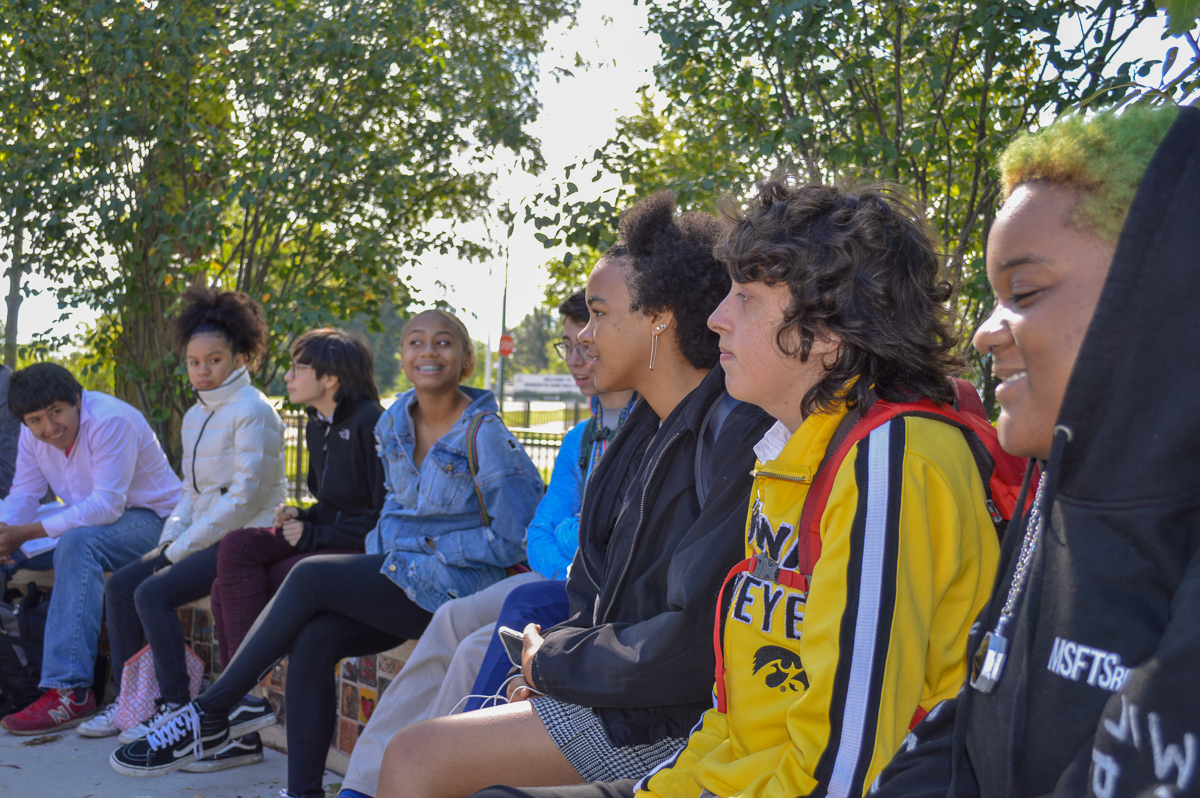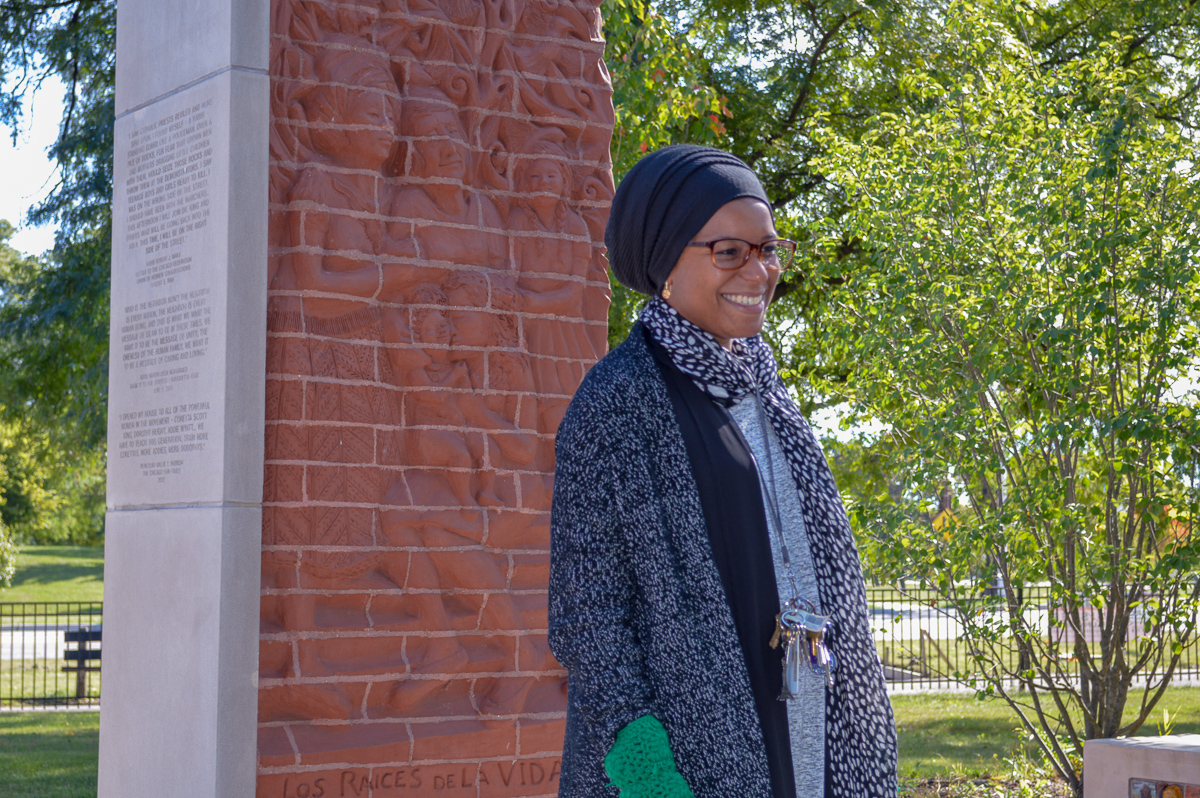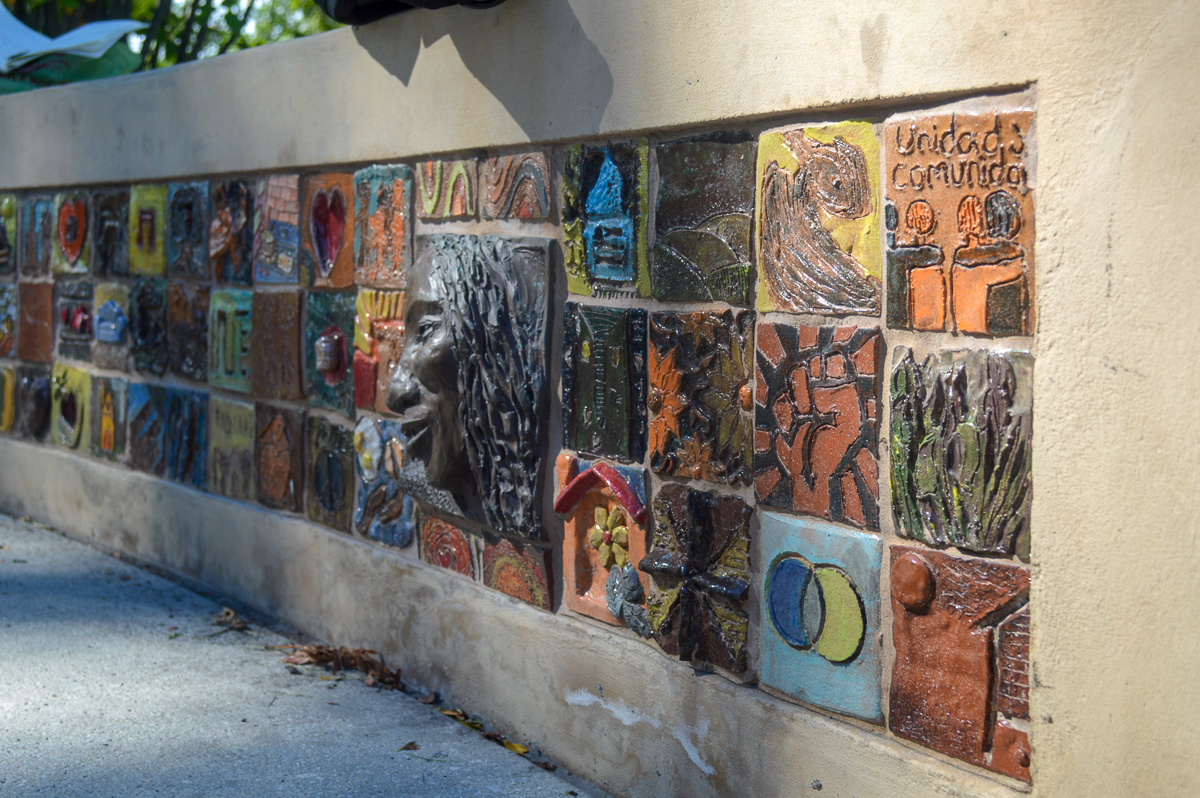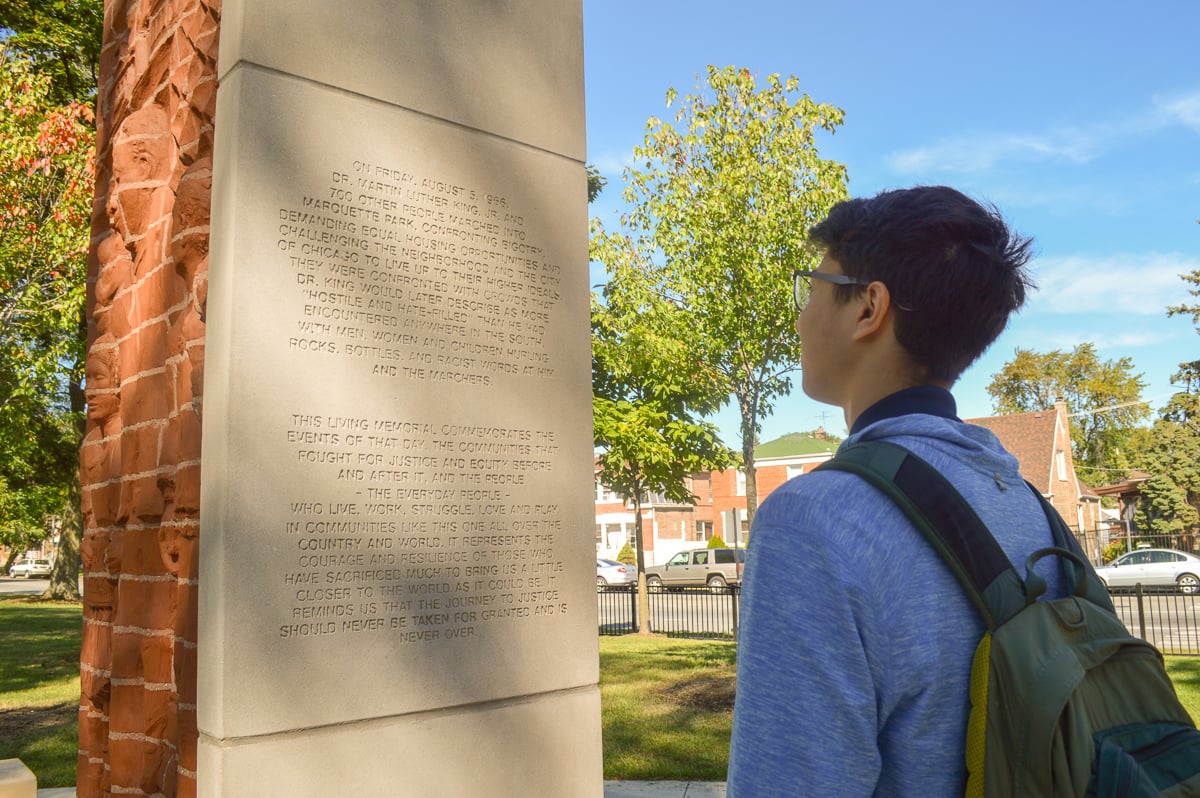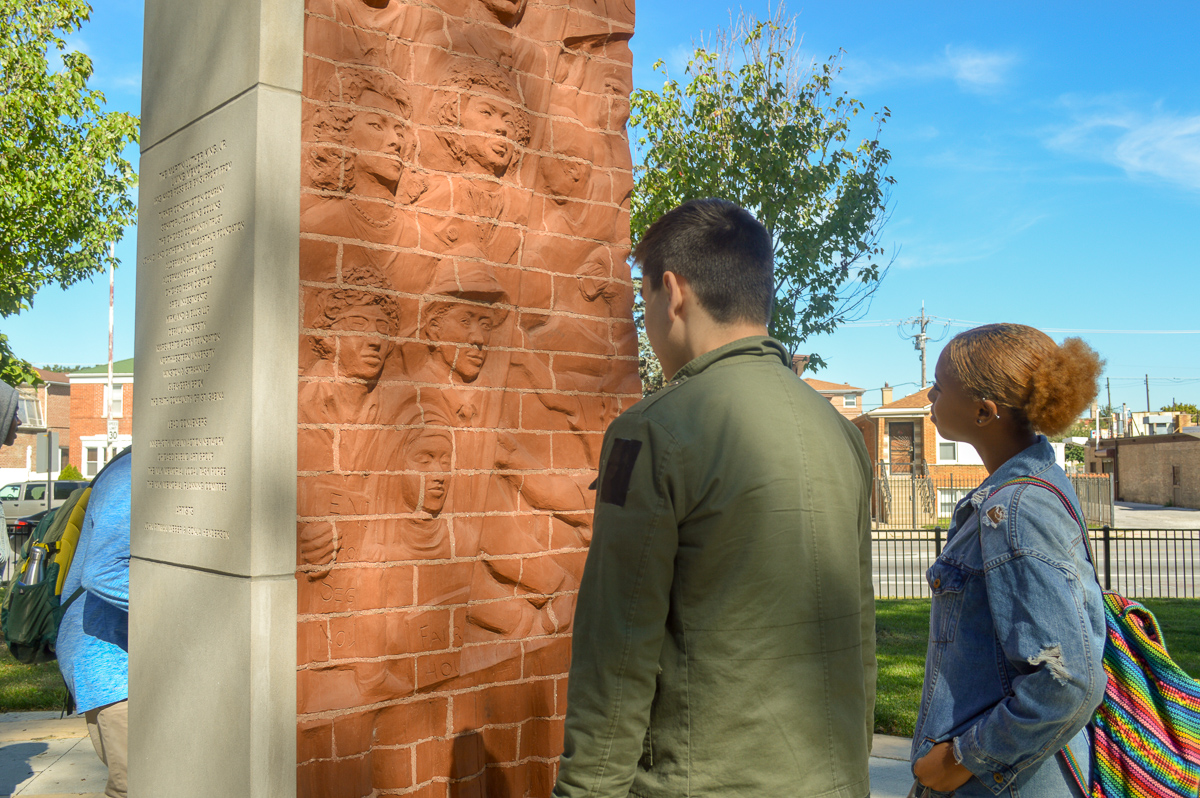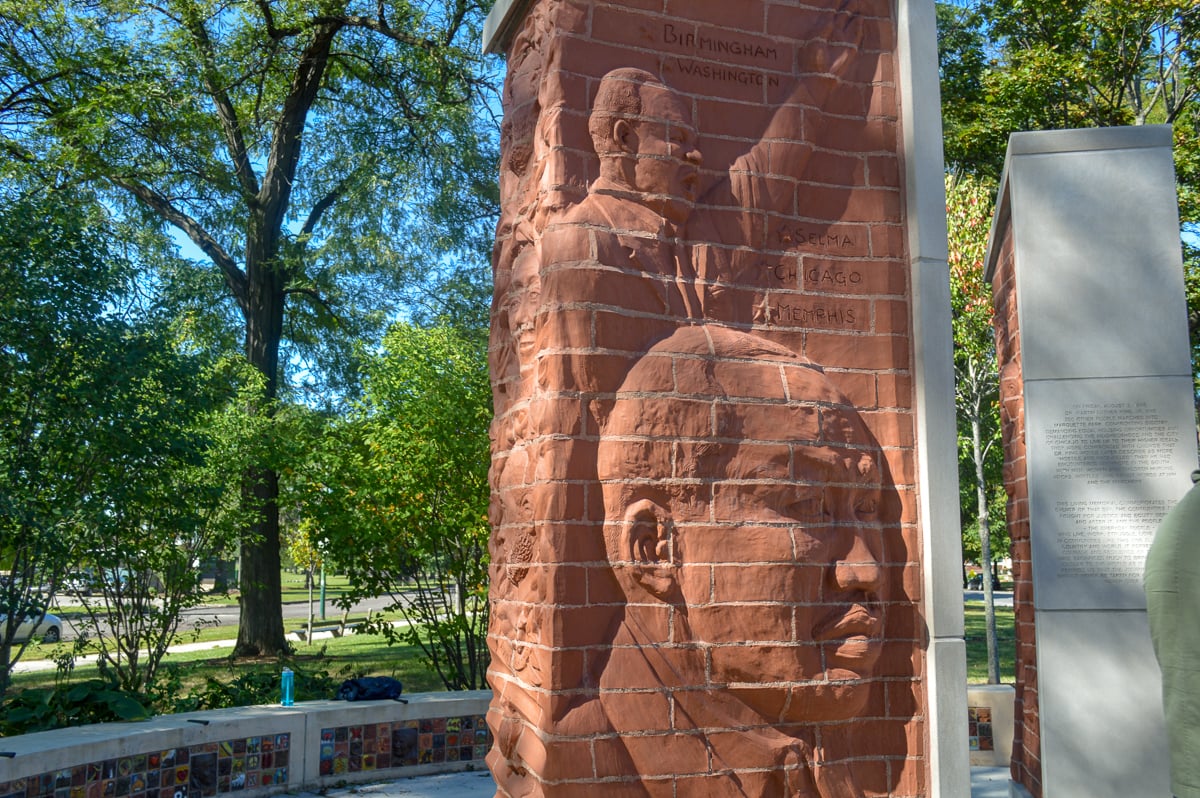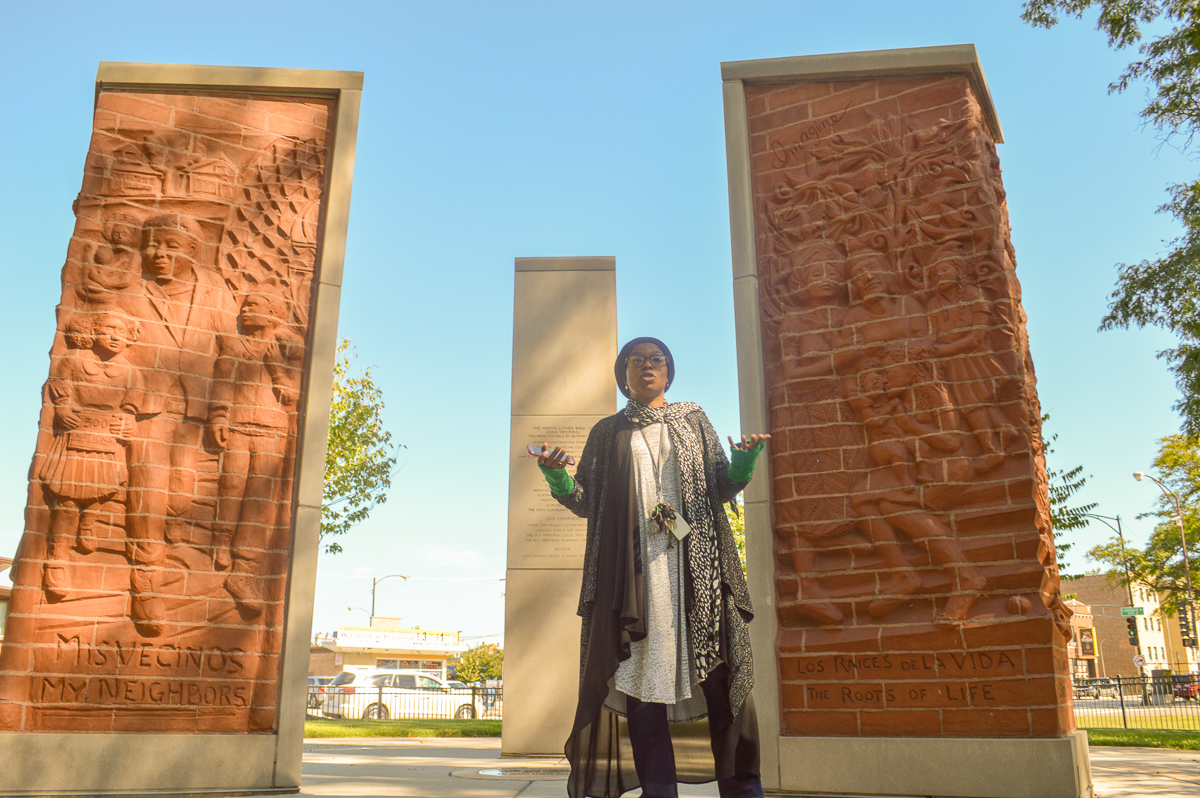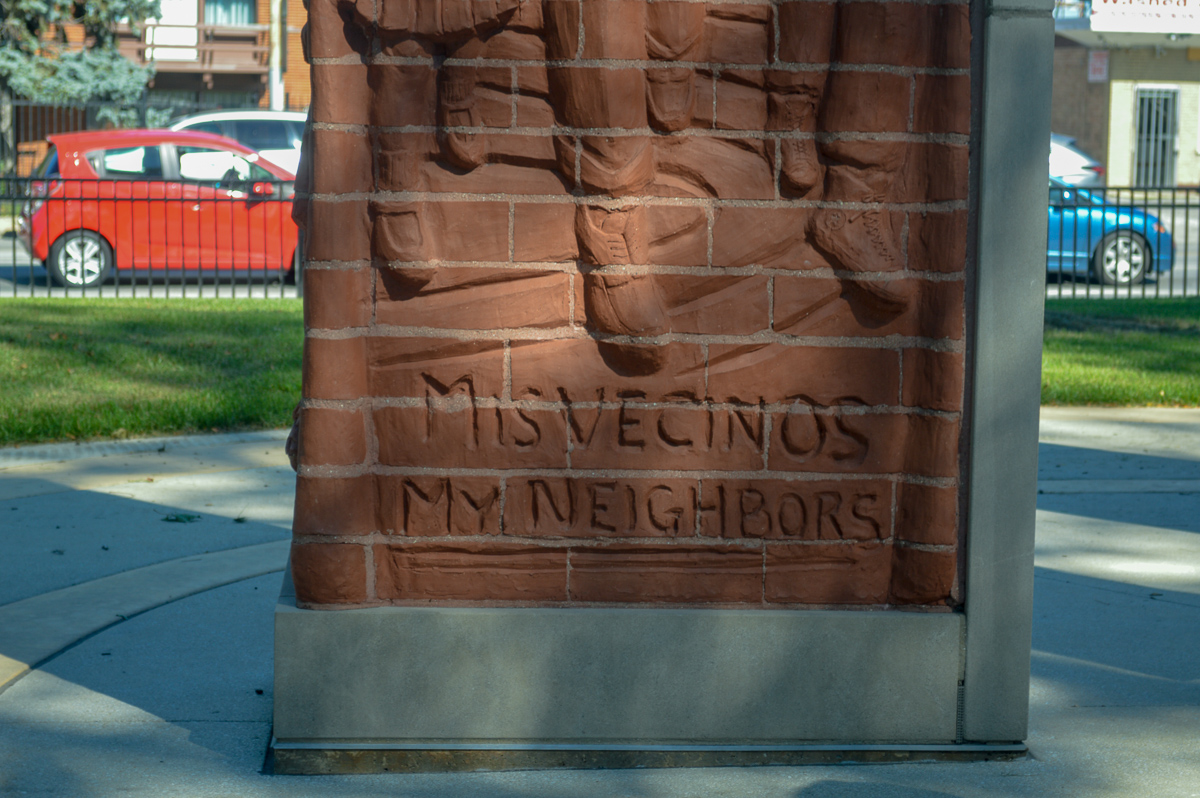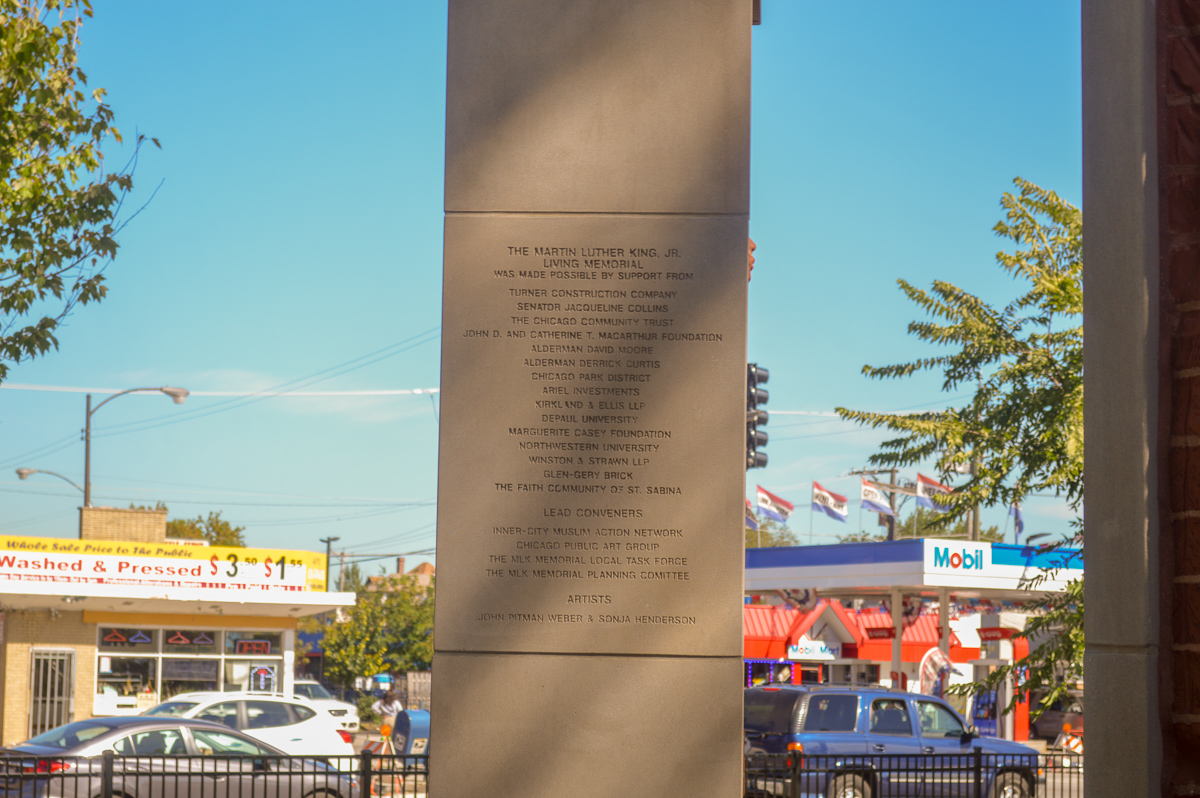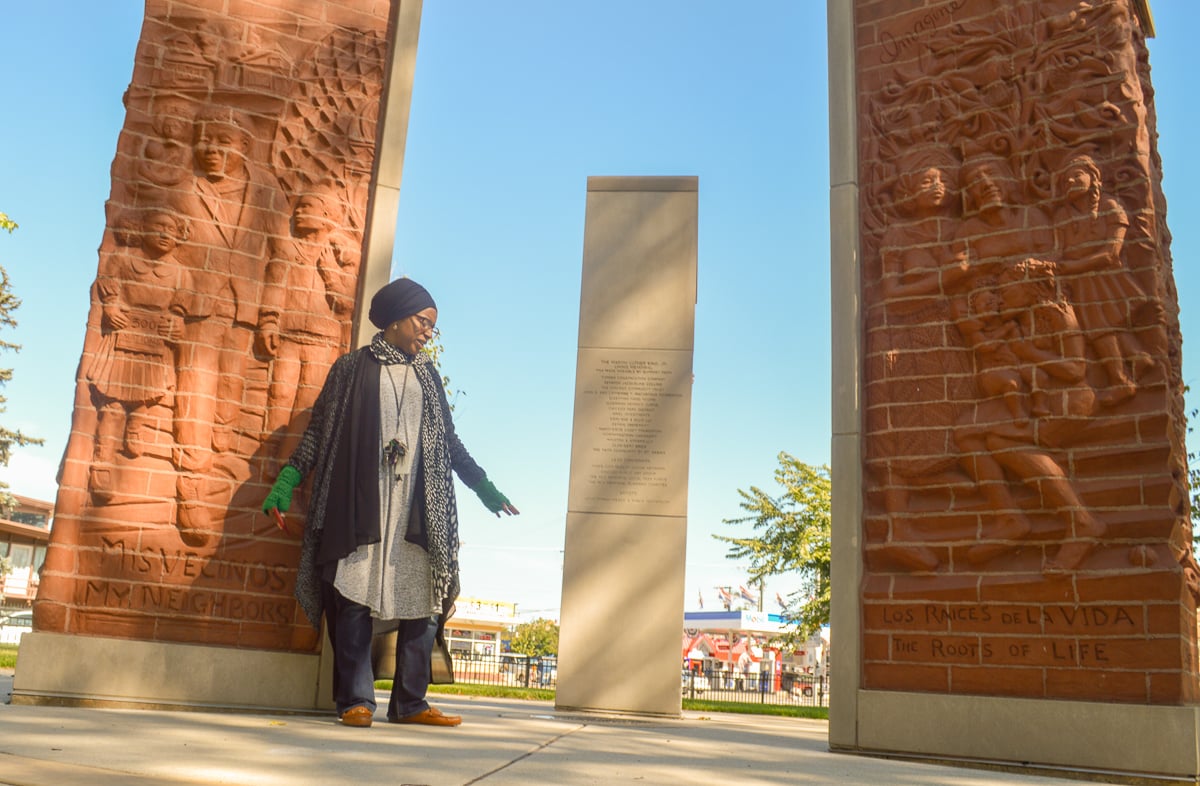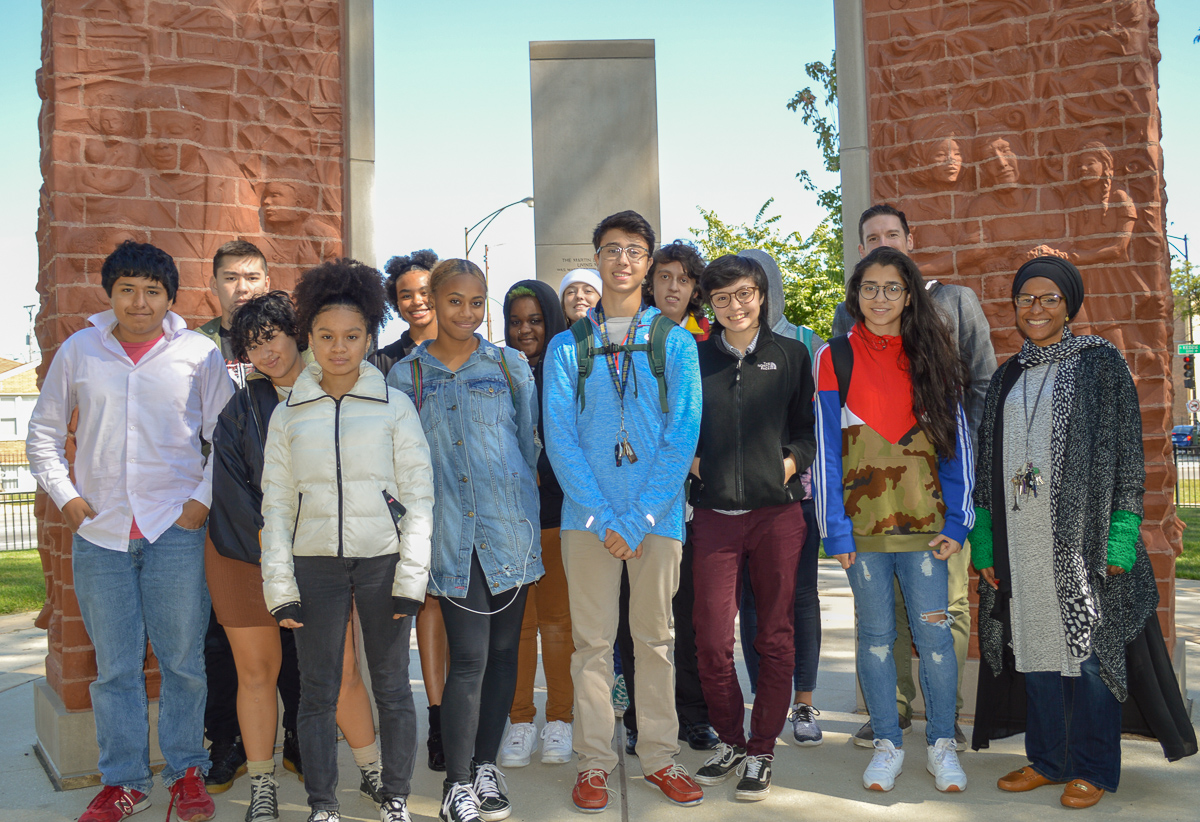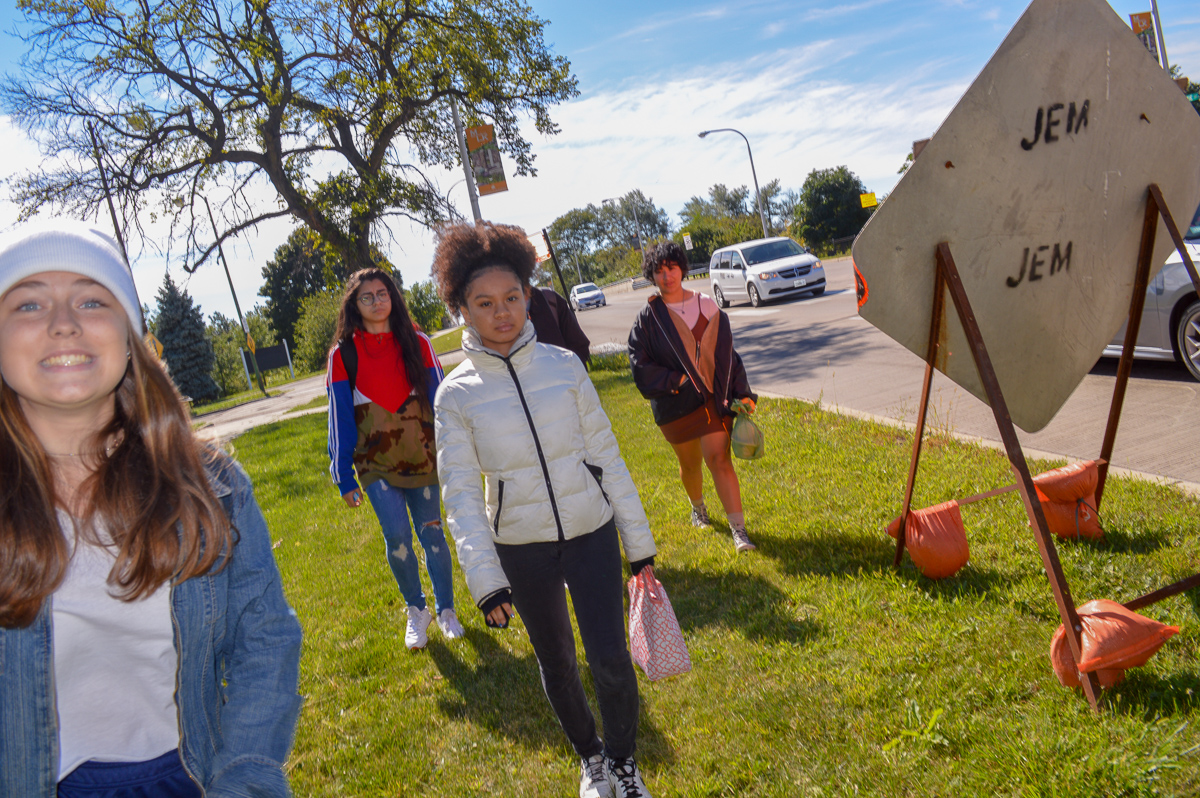Experiencing Visual Rhetoric at the Living Memorial in Marquette Park
Juniors in the Rhetoric class met with Alia Bilal from Inner-City Muslim Action Network (IMAN) at the Dr. Martin Luther King, Jr. Living Memorial in Marquette Park. Students have been pursuing the guiding question, how do voices work to unite people, divide opinion, and transcend conflict? In the third unit of this Humanities course, students are asked to look at how rhetoric inspires and mobilizes?. The Action Project for Unit 3 asks students to create “an original artwork” that “speak[s] out on issues that receive little attention” and “inspires collective action.” In order to contextualize such a statement and experience it in person, we journeyed to Marquette Park to see the monument there to Dr. Martin Luther King’s protest march in 1966, known as the Living Memorial.
Why?
How?
In preparation, students will research:
- The Chicago Freedom Movement
- King/Daley press conference
- Segregation in Marquette Park – real estate offices
- The violent reaction against Dr. King’s march
- Summit agreement w/ Daley
All in an attempt to answer the question: Why is Marquette Park an important landmark in the civil rights struggle?
Proc: What are they doing during FE?
- As we travel to the neighborhood, students will be taking note of the neighborhood’s demographics.
- These demographics will be compared against those of the surrounding area in an attempt to ascertain the success of Dr. King’s goals of desegregation.
- We will be given a tour of the Living Memorial to Dr. King and the Chicago Freedom Movement’s march in Marquette Park in 1966, asking our guiding question: How can we create visual rhetorical statements that address issues of social contention and bring people together to solve them?
The end result will be to ask students to evaluate the monument: does it achieve its purpose or does it fall short in some way? What appeals should we consider in putting together our evaluation?


